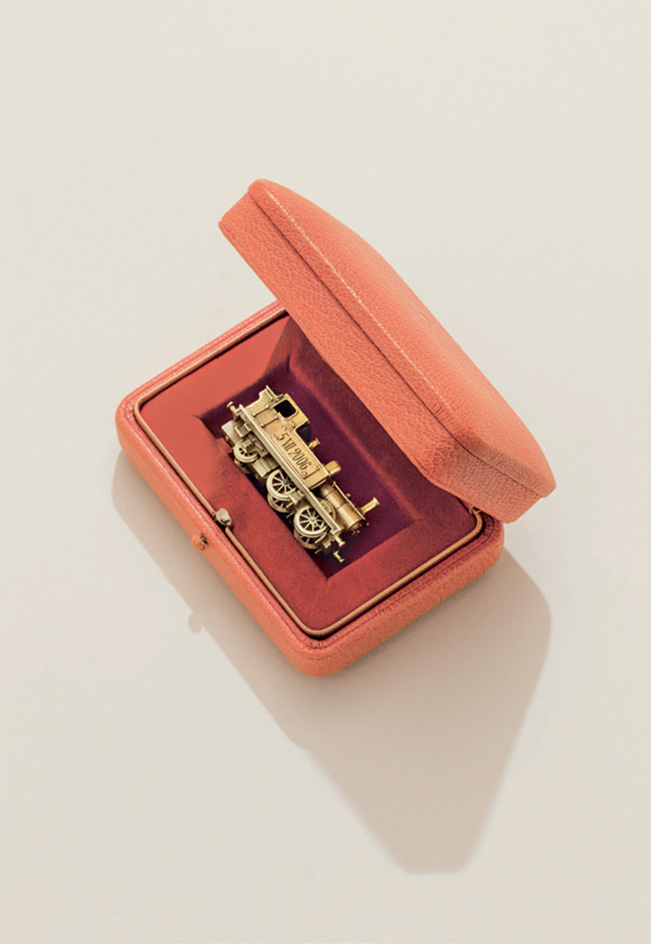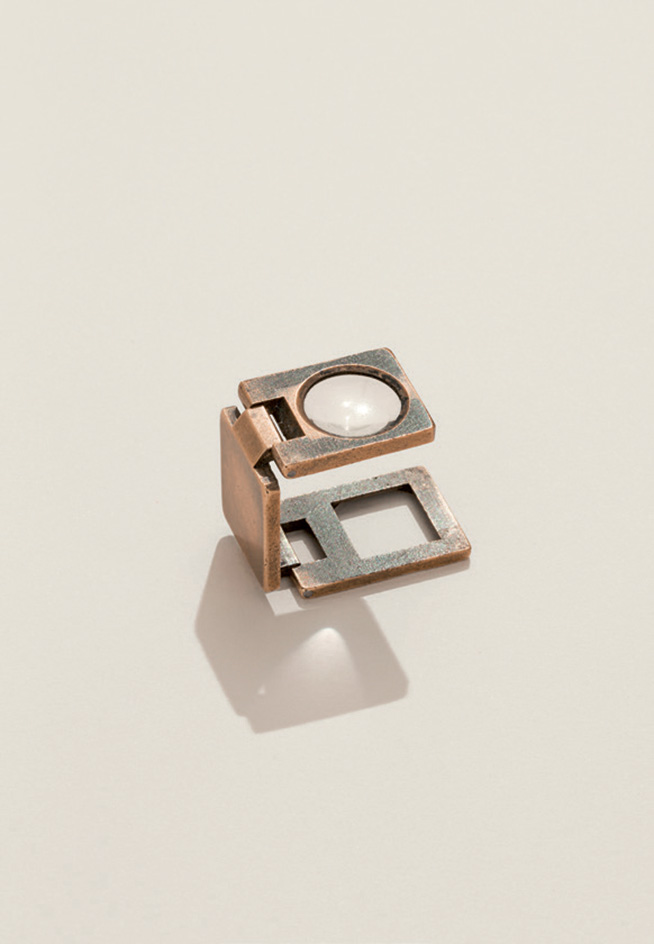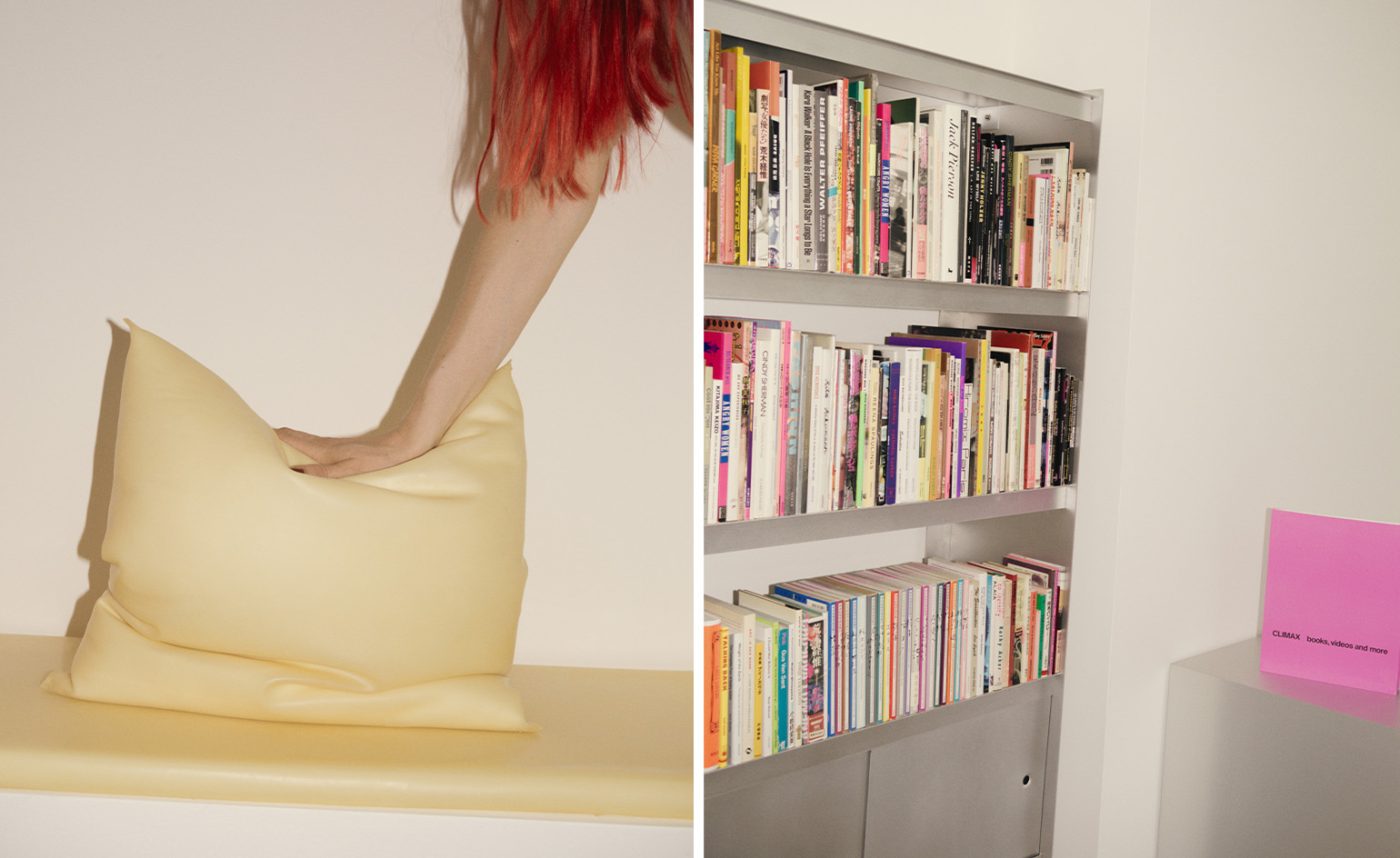Paul Smith on a few of his favourite things
Fashion designer and inveterate collector Paul Smith shares a few of his favourite things in a new book, and here with his friend and travelling companion Deyan Sudjic
Matthew Donaldson - Photography

Paul Smith, Vêtements pour Homme, as Smith called his first shop, was a life-affirming injection of wit and tailoring-with-a-twist into the cheesecloth and tank-top darkness of the 1970s. He had a tiny space, just 10ft by 10ft, in Nottingham, the English city in which he grew up. Its hours were 10am to 6pm, Fridays and Saturdays only. Along with the clothes, there was an Andy Warhol print on the wall that Smith still wishes he could have afforded to buy, and a selection of antique jewellery.
Then as now, what drives Smith is the delight he takes in discovering things, and the pleasure that he takes in sharing his finds with his customers, whom he treats as friends. Sometimes the discoveries end up on sale in his shops. He rescued the Filofax from the clutches of generations of compulsive list makers, before it became a badge of shame, a totem of the toxic materialism of the 1980s. He stocked vintage books, as well as Braun calculators by Dieter Rams.

Label. ‘This was the first real Paul Smith label’ – PS
He likes to tell you about the things he has seen. He once called to ask whether I’d been to Matt’s Gallery in London, the pioneering space for installation art run by Robin Klassnik. He had just seen ‘20:50’, the 200 gallons of sump oil that Richard Wilson had used to flood the building to spectacular effect. ‘It’s the last weekend of the exhibition, you have to go right now,’ he urged.
I had another phone call from Smith soon after he had opened his first store in Japan in 1984. ‘You have got to come to Tokyo, it’s the most amazing place on earth. Come with me next week.’ Luckily for me, I said yes and saw the city through his eyes. At Narita Airport, he pointed out the bus company staff, bowing low to a disappearing coach, a courtly gesture of respect that nobody but us would see. He took me to a tiny bar on an impossible-to-Find alley in Shinjuku, where the barman served sake in unvarnished hinoki wood boxes and knew his name, and to the street full of shops near the old Tsukiji fish market, selling surrealist plates of wax spaghetti. He also took me to dinner with Rei Kawakubo, whom he ambushed with a rubber chicken.
Smith is celebrating the 50 years since he opened that first shop in Nottingham with a new book, edited by former Wallpaper* editor-in-chief Tony Chambers, that tells his story through 50 objects, salvaged from the snowdrift of stuff that covers every inch of his office in London’s Covent Garden. It’s an accumulation that has spilled over from a desk so full of things that it is no longer usable.

Filofax. ‘I sold something like 17,000 of them' – PS
There are tin toy cars, piles of books and magazines, Moroccan bottles, old cameras, a mountain of cycling jerseys, and a pink bicycle. There are a lot of rabbit artworks and ornaments, too. ‘I once said in an interview that seeing one brings me good luck, and the rabbits haven’t stopped pouring in ever since,’ Smith explains. A lot of Smith’s selection is a tribute to his father, Harold, and to his wife, Pauline. ‘My father bought me the Kodak Retinette for my 11th birthday in 1957. It was the first time I’d ever thought about looking and seeing, seeing things through the little view finder which makes you look more carefully. It was the birth of being creative, without actually realising it,’ he writes.
Pauline, who taught him how to cut a pattern, introduced him to Yves Saint Laurent, and gave him an understanding of art. The book includes one of her presents for Smith, a tiny steam engine by jeweller Joel Arthur Rosenthal, its boiler exquisitely made in gold, with diamonds for coal. Also featured is a customised wine glass, a gift from Euan Uglow, one of the most distinguished British figurative painters of the 20th century, and Pauline’s tutor at the Slade School of Fine Art.

Apple iMac. ‘In 1998, Jony Ive gave me a brand-new iMac G3. I don’t use a computer myself, but I’ve never dared to tell Jony that. I do use one of the iPhones he designed, though' – PS
RELATED STORY

The glass reveals another aspect of the artist, and the regard that Smith has for ingenuity and skill. He recalls: ‘We went to Uglow’s studio in Battersea, and it was full of things that he had made himself. I was given a glass of wine. The base of the glass was the handle of a tap. He told me he had dropped the glass, “so I repaired it”. I was blown away.’ Skill is the thread that connects the gold locomotive with Uglow’s wine glass, and with a 22-year-old citrus-green iMac, a gift from Jony Ive. It has never been used, but Smith had put it in the window of his shop on Floral Street, London, as a deliberate contrast with the vintage fittings. (‘As the head of design at Apple, a company that had just teetered on the brink of going out of business, I was never more encouraged or alarmed,’ remembers Ive in the book’s foreword.) Ive’s father, who taught design and technology, had given his son a practical approach to design.
Likewise, Smith’s father, who kept a soldering iron and a vice at home, had also taught him to respect people who get things done for themselves. Smith’s 50 objects are a powerful celebration of touch, a quality that the digital world cannot replace. And they each tell more than one story. Smith is famously a cycling obsessive. But his fondness for a lathe-turned Campagnolo seat pillar represents not just the memory he has of putting it into his bike for the first time, it’s also a reminder of the pleasure we all take in the physical quality of things. ‘I realised that it had a ridge on it, and when I ran my nail along it, I could feel how beautifully it had been made. Not only could you see how beautiful it was, you could actually feel it, too.’

Record player, by Dieter Rams at Braun. ‘Music and cycling are the two things that have stayed with me throughout my life’ – PS
It’s not just that the Braun record player in his selection was designed by Dieter Rams, it’s also about the music – Otis Redding, The Temptations, Eric Clapton and Led Zeppelin – that has been important to him for almost as long as cycling has. And it reminds him of the Wharfdale speakers that he packed into his car and drove to Paris to provide the soundtrack for one of his earliest shows. Smith’s anniversary comes in the midst of a pandemic that has up-ended the fashion world. He is still resolutely not doing things the obvious way, still full of energy, and still irrepressibly curious.
He has shops in lots of places now, from Melrose Avenue in LA, a shocking pink architectural tribute to Luis Barragán (W*86), to Albemarle Street in London, designed by architects 6a (W*174), where Smith himself is sometimes to be found behind the till on a Saturday. He sees that personal connection as an essential part of the future: ‘When people aren’t travelling, or coming into shops, working online is helpful. But it’s not a long-term solution. Online is not about enjoying a conversation, or about discovering things.’
A version of this article originally appeared in the November 2020 Issue of Wallpaper*


1998 Paul Smith velvet suit, reissued for the A/W20 50th Anniversary Capsule Collection. ‘Wearing velvet in the daytime was quite avant-garde' - PS

Paramount bicycle. ‘I got the bike for my 12th birthday, in 1958, and I started racing a year later' - PS

‘Toio’ floor lamp, by Achille and Pier Giacomo Castiglioni. ‘This lamp is a fantastic example of thinking differently’ - PS

Handmade train by Joel Arthur Rosenthal. ‘I love knowing people who are so extraordinarily good at what they do' - PS

Bauhaus book. ‘I carried the book everywhere with me, even on backpacking holidays' - PS

Campagnolo seat pillar. ‘Just pure style’ - PS

Wax plate of spaghetti. ‘It reminded me of Salvador Dalí' - PS

The Dreamer of Dreams, illustrated by Edmund Dulac. ‘One small thing can inspire a whole collection' - PS

Wine glass, by Euan Uglow. ‘“I dropped it,” Euan said,” so I repaired it”’ - PS

Linen prover. ‘I always had this in my pocket when I was designing fabrics for Leigh Mills in Yorkshire' - PS
INFORMATION
Receive our daily digest of inspiration, escapism and design stories from around the world direct to your inbox.
Paul Smith, edited by Tony Chambers, with a foreword by Jony Ive, Phaidon, £50. phaidon.com; paulsmith.com
Paul Smith joins Tony Chambers for an online talk in celebration of fifty years of his brand at 19:00 on 23 November, hosted by the V&A
-
 Valie Export in Milan: 'Nowadays we see the body in all its diversity'
Valie Export in Milan: 'Nowadays we see the body in all its diversity'Feminist conceptual artists Valie Export and Ketty La Rocca are in dialogue at Thaddaeus Ropac Milan. Here, Export tells us what the body means to her now
-
 Martell’s high-tech new cognac bottle design takes cues from Swiss watch-making and high-end electronics
Martell’s high-tech new cognac bottle design takes cues from Swiss watch-making and high-end electronicsUnconventional inspirations for a heritage cognac, perhaps, but Martell is looking to the future with its sharp-edged, feather-light, crystal-clear new design
-
 In 2025, fashion retail had a renaissance. Here’s our favourite store designs of the year
In 2025, fashion retail had a renaissance. Here’s our favourite store designs of the year2025 was the year that fashion stores ceased to be just about fashion. Through a series of meticulously designed – and innovative – boutiques, brands invited customers to immerse themselves in their aesthetic worlds. Here are some of the best
-
 ‘If someone says no, you’re talking to the wrong person’: how make-up artist Marcelo Gutierrez created his own universe in New York
‘If someone says no, you’re talking to the wrong person’: how make-up artist Marcelo Gutierrez created his own universe in New YorkFresh from publishing his first book ‘Nothing Precious’, Marcelo Gutierrez speaks with Mary Cleary about his friends, collaborators and making it as a young creative in New York City
-
 Paul Smith’s Claridge’s Christmas tree is a playful slice of ‘countryside in the centre of London’
Paul Smith’s Claridge’s Christmas tree is a playful slice of ‘countryside in the centre of London’Sir Paul Smith is the latest in a long line of fashion designers to curate the iconic Claridge’s Christmas tree. Here, he talks to Wallpaper* about the inspiration behind the tree, which features bird boxes and wooden animals
-
 Fashion’s favourite bookstore, Climax, opens a ‘sexy, angry’ New York outpost
Fashion’s favourite bookstore, Climax, opens a ‘sexy, angry’ New York outpostWallpaper* catches up with Isabella Burley, founder of Climax, as she inaugurates a New York outpost of the cult bookstore and showcases a playful new collaboration with fashion label Chopova Lowena
-
 Inside Karl Lagerfeld’s extraordinary Paris library and bookshop, a haven for the bibliophile
Inside Karl Lagerfeld’s extraordinary Paris library and bookshop, a haven for the bibliophileWe take an exclusive tour of Karl Lagerfeld’s Paris bookshop and library 7L, which is keeping the legendary fashion designer’s vision alive with a scintillating programme of cultural events
-
 Jouissance: the perfume brand turning erotic French literature into subversive scents
Jouissance: the perfume brand turning erotic French literature into subversive scentsJouissance has interpreted the literature of Anaïs Nin, Anne Desclos and Catherine Millet into perfume, brand founder Cherry Cheng tells Wallpaper*
-
 Pitti Uomo 106: what we learnt from the Florence menswear fair
Pitti Uomo 106: what we learnt from the Florence menswear fairWhile this season’s Pitti Uomo guest designers embraced Florence’s uniquely cinematic setting, at the fair itself, brands presented comprehensive offerings that crossed seasons and celebrated Italian craft
-
 Paul Smith opens up ‘Bar Paul’ for his return to Pitti Uomo after 31 years
Paul Smith opens up ‘Bar Paul’ for his return to Pitti Uomo after 31 yearsPaul Smith’s S/S 2025 menswear collection, shown yesterday evening as part of Florence menswear fair Pitti Uomo, was inspired by the Italian coffee bars of London’s Soho and their artistic patrons
-
 Remembering Liquid Sky, the cult 1990s New York fashion store that was ‘also a scene’
Remembering Liquid Sky, the cult 1990s New York fashion store that was ‘also a scene’As a new book is released, Liquid Sky founders Claudia Rey and Carlos Slinger tell Wallpaper’s Mary Cleary about the downtown fashion store that attracted New York’s underground and had Chloë Sevigny as a sales clerk